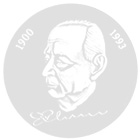Outstanding yet comprehensible reports on an impressive variety of topics in the natural sciences
The NATURWISSENSCHAFTLICHE RUNDSCHAU –
60 Years and Counting
The first issue of the NATURWISSENSCHAFTLICHE RUNDSCHAU appeared on July 1, 1948, just after the currency reform in the Allied occupation zones of Germany. With this journal, the Wissenschaftliche Verlagsgesellschaft in Stuttgart expressed its hope in the future of a warravaged nation that was not even close to regaining its status as a constitutional state. And it cast a vote of confidence for the natural sciences as a decisive force in shaping the future. Only a few months previously, the Max Planck Society had been founded in Göttingen in the British occupation zone as a successor to the legendary Kaiser Wilhelm Society. Now the NATURWISSENSCHAFTLICHE RUNDSCHAU tried to make its own contribution to the promotion of science by setting itself the goal of providing “… comprehensive information about current developments in the natural sciences and the latest research findings here and abroad for all trained scientists and interested laypersons”.
The NATURWISSENSCHAFTLICHE RUNDSCHAU had no predecessor in the Stuttgart publishing house, but continued in the steps of a journal of the same name that was published by Friedrich Vieweg und Sohn in Braunschweig from 1886 to 1914 to provide weekly reports on progress in the entire field of the natural sciences.
The small team of editors under the leadership of the entomologist Hans Walter Frickhinger and the young biologist Hans Rotta quickly succeeded in establishing the new publication as a voice of authority on the German-language publishing scene. Together they established contacts to the Max Planck Society and to the Gesellschaft Deutscher Naturforscher und Ärzte (Society of German Scientists and Physicians). Upon the death of Frickhinger in 1955, Roswitha Schmid became co-publisher and joined Rotta in continuing these efforts.
Beginning in the mid-1950s the journal published on the annual meetings of the German Academy of Sciences Leopoldina in Halle as well. This extensive network was expanded in the following years, always with a consciousness of an intellectual solidarity of the sciences that transcended disciplines and specialties to unite persons of varied political and ideological backgrounds. The fact that science took clear precendence and priority enabled the NATURWISSENSCHAFTLICHE RUNDSCHAU to be classified as an unsuspicious publication so that it was also available in East Germany, where it allowed readers there to participate in international developments. In order not to endanger delivery, the journal made do without potentially objectionable advertisements and inserts. This spirit of understanding in science was also embodied by the annual meetings of Nobel Prize laureates in Lindau from 1951 on, an event that was reported in the NATURWISSENSCHAFTLICHE RUNDSCHAU from its very beginning. These articles were particularly invaluable to readers in East Germany. By the same token, with its reports on the yearly meetings of the Leopoldina, the journal gave its Western audience unique insight into an academic world that stood up against ideological pressure. Just as unique were the articles in the NATURWISSENSCHAFTLICHE RUNDSCHAU by writers who had been driven out by war and the Nazi dictatorship, including the scientists Max Perutz, Sir Hans Krebs and Lise Meitner and great science journalists like Anthony Michaelis and Georg Breuer. Together with contributions from other well-known names that appeared in the pages of the NATURWISSENSCHAFTLICHE RUNDSCHAU, from Otto Hahn, Werner Heisenberg, Severo Ochoa and Linus Pauling to Ernst Mayr, Manfred Eigen, Christiane Nüsslein-Volhard and Theodor Hänsch, they give us an impression of the intellectual riches that we owe the natural sciences.
The NATURWISSENSCHAFTLICHE RUNDSCHAU has remained true to its original goal of providing “comprehensive information about current developments in the natural sciences”, even if its implementation has evolved over the years. An easy-to-read, more open layout, new fonts, new headings and electronic formats are all vital to survival in today’s media world, but they also offer the opportunity to respond to contemporary topics. In 1999, in cooperation with the Leopoldina, the journal began to publish an irregular series of special issues on current topics (BSE, world hunger, stem cell research, energy supply, etc.), and since 1996 it publishes working papers of the Max Planck Society aimed particularly at school-age readers in the series BIOMAX, TECHMAX and GEOMAX. In 2003 the NATURWISSENSCHAFTLICHE RUNDSCHAU became the official organ of the Gesellschaft Deutscher Naturforscher und Ärzte and accompanies their meetings with its own lunch symposium.
Dr.rer.nat. Klaus Rehfeld,
NATURWISSENSCHAFTLICHE RUNDSCHAU
